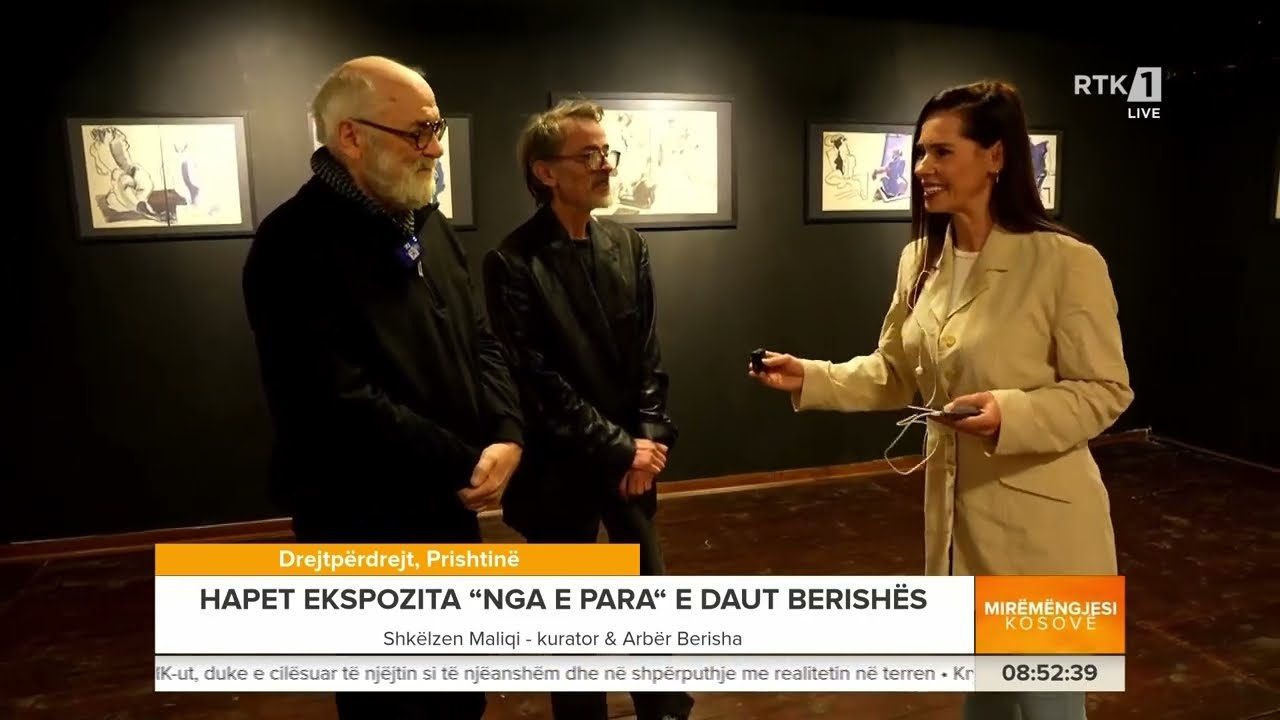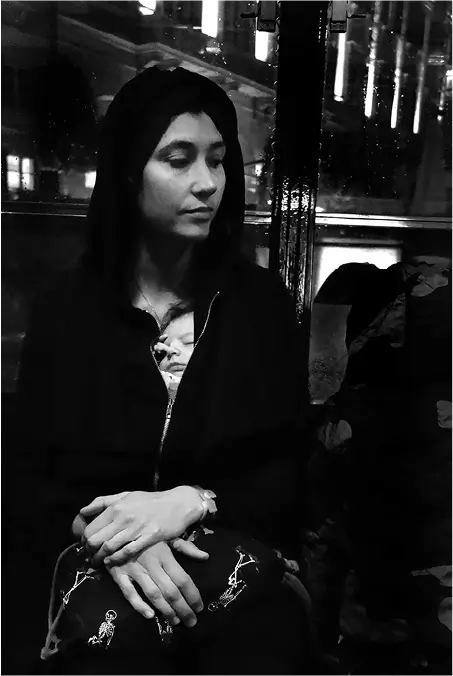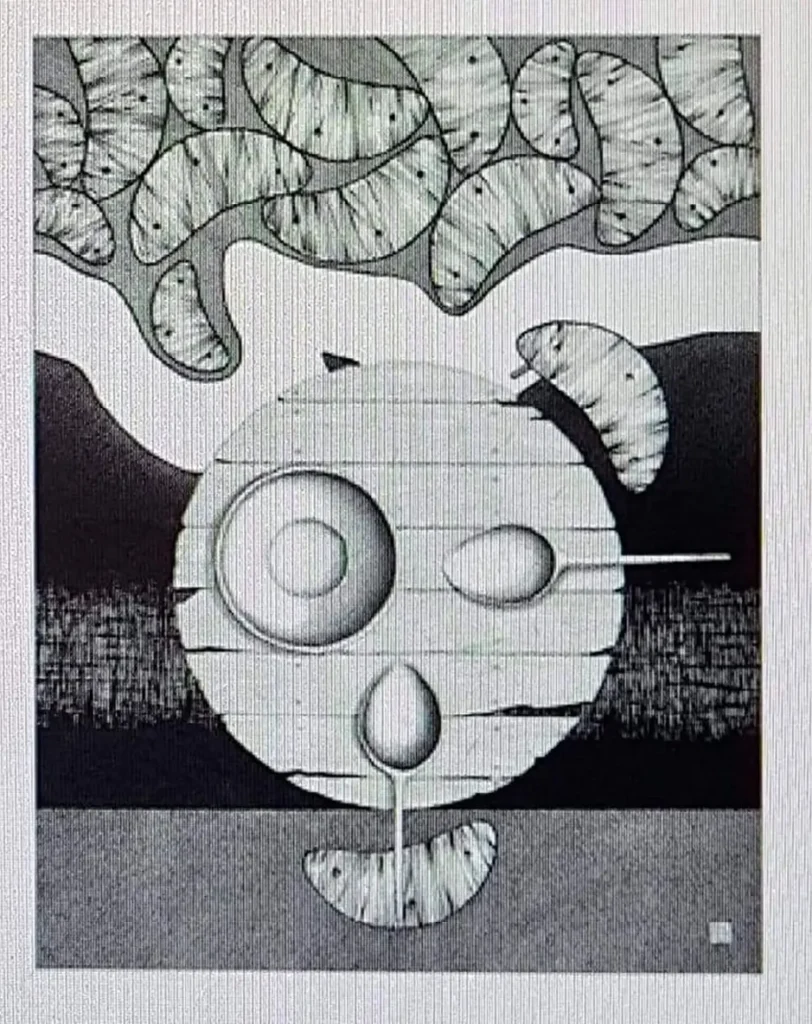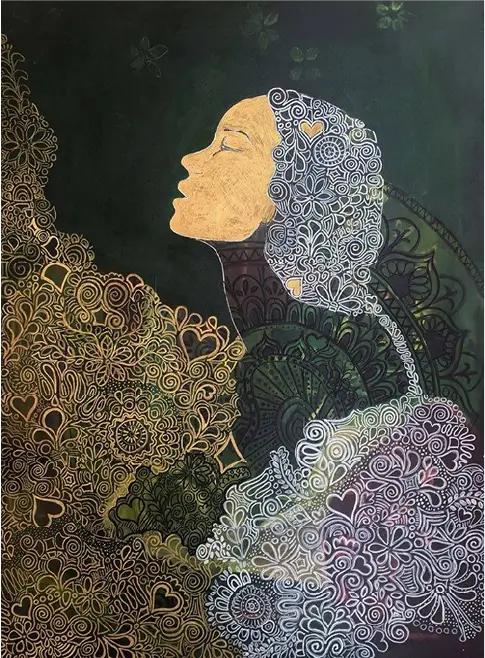DAUT BERISHA – NGA E PARA
Drawings and sketches / Hani i 2 Robertëve, April 2025
Shkëlzen Maliqi
One of the Kosovar modernist painters whose artistic careers have developed outside of Kosovo, Daut Berisha [1946-2023], is among the most famous as a name but his work, paradoxically, is almost unknown. If one looks for information about his art in the few respectable publications on modern art in Kosovo, one can only find a few reproductions of the work “Triptych” from 1980, and a few reproductions from the so-called “Blue Cycle”. Here and there, you can also eventually find poor-quality reproductions of some paintings and sculptures, as well as articles and journalistic reports on exhibitions in France, where he lived and worked for years.
The most reproduced work of Daut Berisha is “Triptych” [1980], published in the monograph “Contemporary Art of Kosovo” [GAK, 1988]. In “Triptych”, the influence of Francis Bacon is clearly noticeable even from the title itself, because this British painter had the habit of painting the motifs in three parallel paintings, with different perspectives. Daut did not faithfully follow Bacon’s emblematic brutalism with the depictions of the human body in a state of distortion resembling the freshly slaughtered meat that is still dripping with blood in a slaughterhouse, but preferred a softened figuration with arched and sensual shapes—not in a state of sadness from the internal implosion that appeared in Bacon, but as scenes of sadness seen from the outside, in dehumanized social environments, images of the wretched and unfortunate of the world. The titles of the works that Dauti gave them are also depressing: “Darkness”, “Dead Alley”, and similar ones, that suggest a feeling of existential despair. Even another painting, among the few I have seen, despite the title “The Light of Hope”, does not really arouse optimism at all. In this painting, an aura of light is seen spreading from the window of an attic where three people are sitting under the window, hunched over as if in anguish, with their heads buried between their knees, as if hopeless, although, paradoxically—and this is perhaps the subtle message of the painter—those poor people, if they were to open their eyes, would see how close they have the light of hope!

I mentioned these two paintings as an aid to decoding Dauti's art but I would not go further in interpretations because I lack a fuller knowledge of his creative opus. Why was Daut hesitant in promoting his art, especially in his homeland? Did the circumstances of the 80s and 90s hinder him? Then what was his problem after the liberation?
In fact, in 2015, Daut accepted the invitation from the National Gallery of Kosovo to organize the exhibition which would take place on the occasion of the 70th anniversary of his birth. Daut was enthusiastic, ordered many fabrics and colors, worked for a while… But, then, he hesitated… As if something was stopping him. The insidious disease that would end his life in 2023, or other doubts? As for his studio… there are not many witnesses to what of his works remain in his studio; few were allowed to enter it.
But the good news is that his art will soon become accessible. The legal formalities regarding Daut's legacy have been completed in Paris. The works will be returned to Kosovo, to the Berisha family. So, there is hope that we will be able to see a retrospective exhibition of his art. We hope that this will happen as soon as possible.
In this case, Hani i 2 Robertëve is fulfilling a long-standing desire of Daut's, to organize an exhibition of his works. Every time he came to Prishtina, he found time to visit Hani where he spent a few moments of relaxation and expressed his desire to bring an exhibition to Hani, considering the use of the gastronomic establishment as an art gallery a noble undertaking. “Art with a glass of red wine make me feel as if I were at the Dôme Café in Montaparnas in Paris!”, Daut used to say.
Owing to the collaboration with his brother, Arbër Berisha, we were given the opportunity to present Daut’s early works, drawings and sketches, good news for the Kosovo public, which will be able to see his first steps in creativity, when he was researching, and in an innocent way revealing his talent. These works often seem incomplete, and they were by all means research tests, sketches and varieties for the realization of a theme that he planned to realize as a painting, like, for example, a dozen portraits of our national hero Skanderbeg, or portraits of a beautiful girl with her hair arranged in a characteristic way, with a tuft on her forehead raised high like an aristocratic crest, which sometimes takes the shape of a proud eagle's beak, in Daut's piquancy that must be deciphered as to whether it is the product of his imagination, or a sketch for a portrait of some historical or legendary heroine.
This selection of quick-moving sketch drawings, newspaper sketches, collages... hundreds of them, most of them unsigned, nevertheless have a rare signature of Daut Berisha’s craftsmanship and talent. They are art works in themselves.
And it makes a lot of sense that, since we have been missing an exhibition of his for a long time, we would begin to get to know Daut Brisha's art from the beginning, with his early works.
Welcome to the Homeland, Daut.
(March/April 2025)






